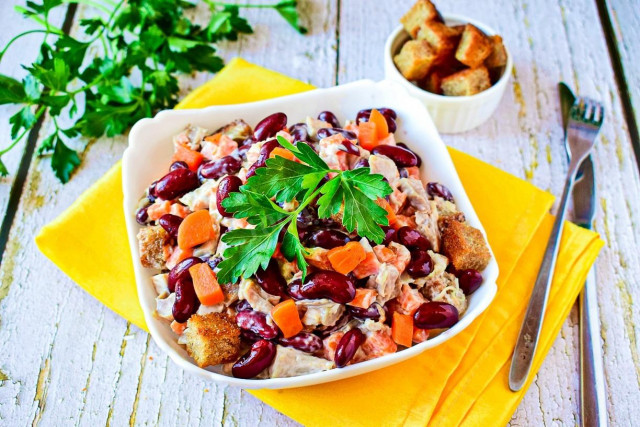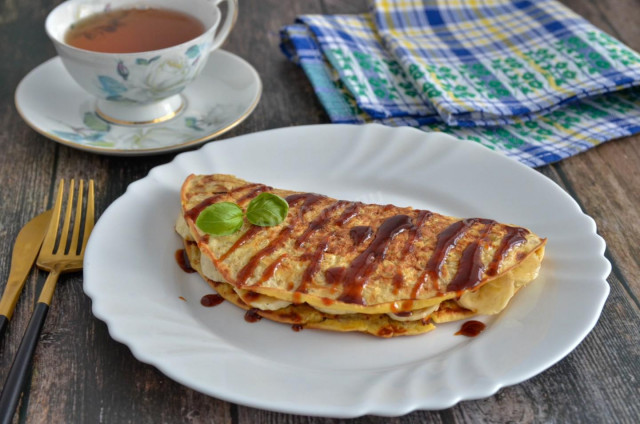Composition / ingredients
Step-by-step cooking
Step 1:

How to make a Japanese omelet? Prepare the simplest ingredients. If you have rice wine, mirin is an ideal option. If not, take rice vinegar.
Step 2:

Break the eggs into a deep bowl.
Step 3:
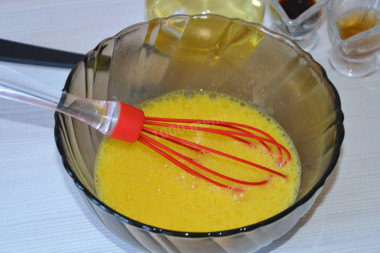
Now whisk everything with a whisk. If you want, you can use a mixer, only at low speeds. We don't need a lush mass and foam, we just need to break the structure of the egg and connect everything)
Step 4:
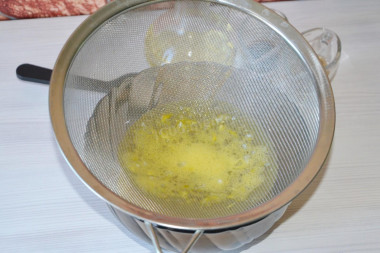
Now it's important - don't miss this moment and don't be lazy) It is necessary to strain the beaten eggs through a sieve. To get rid of inhomogeneous particles.
Step 5:
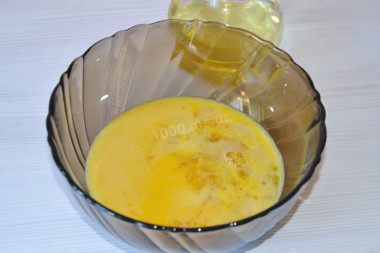
Add spices to the strained beaten eggs: soy sauce, rice vinegar and sugar. Adjust the amount of sugar. If you want a not very sweet omelet, pour an incomplete teaspoon. You can replace sugar with a sweetener.
Step 6:

Now whisk everything well again so that the sugar dissolves.
Step 7:

Start frying our Japanese omelet) In the original, it is fried in a rectangular frying pan. Unfortunately, I don't have one)) We will fry on a round) Brush the heated frying pan lightly with oil, pour a ladle of egg mixture on it and spread it over the pan in circular movements. Put the fire below average, we need the omelet mass to seize, but not burnt!
Step 8:
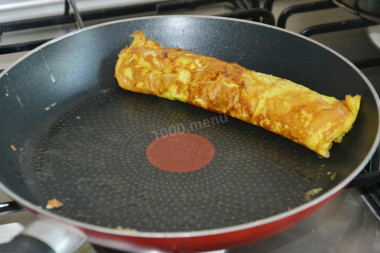
When the omelet is gripped, roll it right in the pan into a roll. The Japanese do it with chopsticks)) I did it with a spatula)) Just be careful, don't get burned. Leave the roll under the side of the pan.
Step 9:
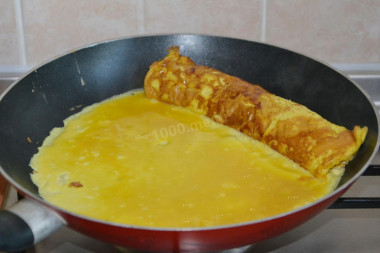
Lightly oil the pan again, pour a ladle of omelet mass, distribute it in a circular motion over the pan. It is necessary that the mass also falls under the roll. And cook again until the omelet grabs. Then carefully roll the roll in the opposite direction, that is, screw it onto the previously fried roll) And so do it until the egg mixture runs out. I always get 5 such ladles.
Step 10:
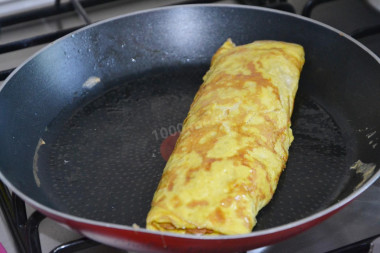
This is how the finished omelet looks like.
Step 11:
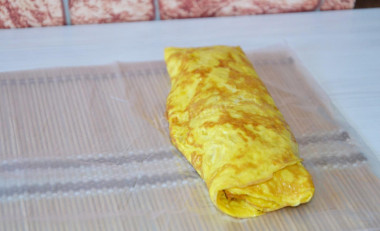
While it's hot, give it a neat rectangular shape. Wrap the roll-up mat with a film, put the roll on it and, turning the mat, give the omelet a rectangular shape.
Step 12:
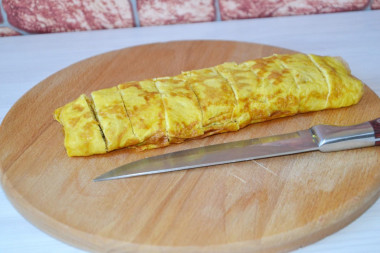
Cut the finished Tamago omelet into pieces with a sharp thin knife.
Step 13:
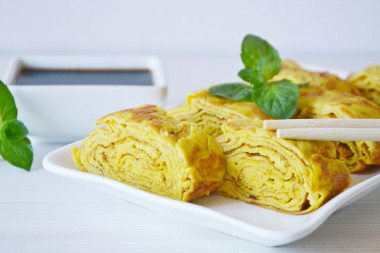
It's very tasty to eat such an omelet with soy sauce, wasabi, pickled ginger. Prepare it for breakfast for your family - and your morning will begin with praise for you! It's very tasty! Cook for health and bon appetit!
I recommend eating such an omelet in the morning. Its unusual taste will energize you for the whole day)) And since these are eggs - protein - satiety before lunch is guaranteed to you!
Bon appetit!
Instead of sugar, you can use a sweetener that is not afraid of heat treatment.
Use oil with a high smoking temperature for frying! Any oils are useful only until a certain temperature is reached - the point of smoking, at which the oil begins to burn and toxic substances, including carcinogens, are formed in it.
Unrefined oils, with rare exceptions, have a low smoking point. There are a lot of unfiltered organic particles in them, which quickly begin to burn.
Refined oils are more resistant to heating, and their smoking point is higher. If you are going to cook food in the oven, on a frying pan or grill, make sure that you use oil with a high smoking point. The most common of the oils with a high smoking point: refined varieties of sunflower, olive and grape.
Be sure to wash the eggs before use, as even the seemingly clean shell may contain harmful bacteria. It is best to use food detergents and a brush.
Caloric content of the products possible in the composition of the dish
- Soy sauce - 51 kcal/100g
- Granulated sugar - 398 kcal/100g
- Sugar - 398 kcal/100g
- Vegetable oil - 873 kcal/100g
- Chicken egg - 80 kcal/100g
- Rice vinegar - 20 kcal/100g



